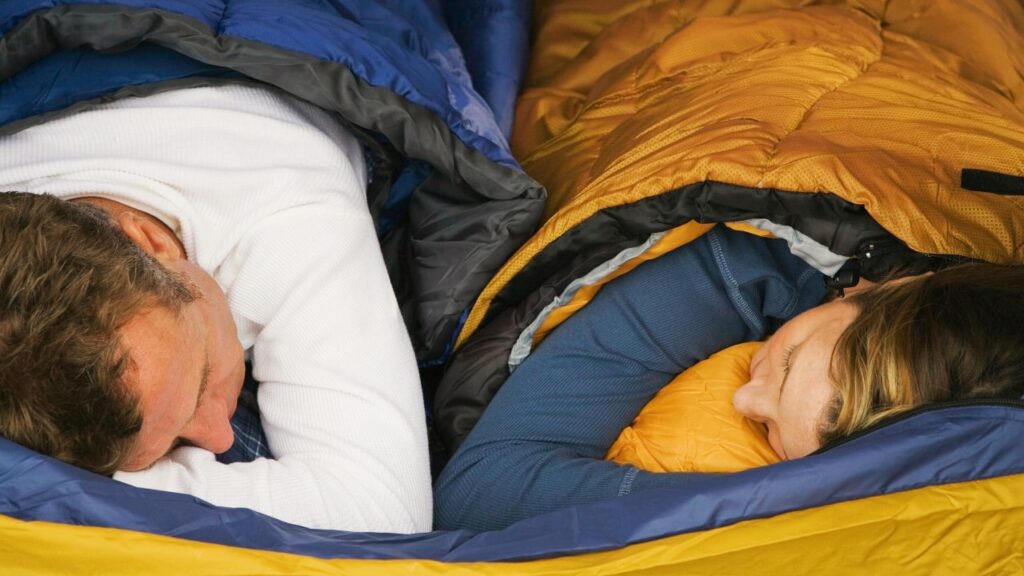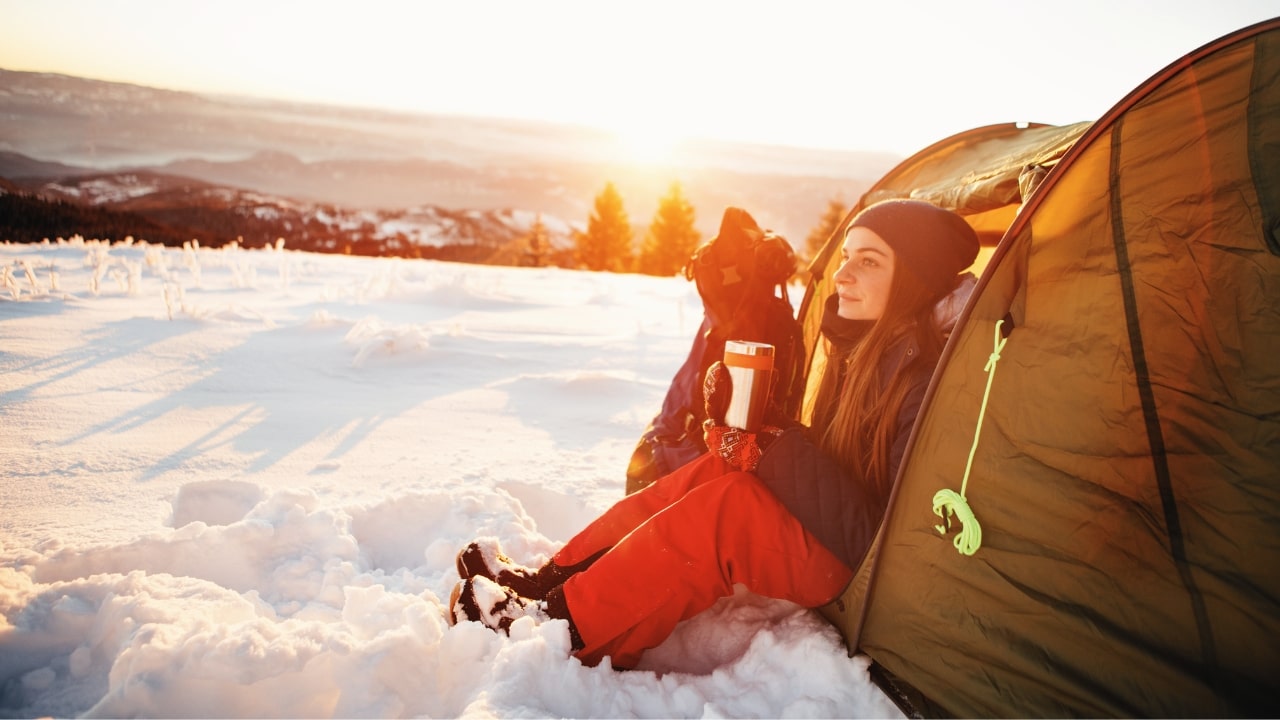It’s all about that great outdoors connection when it comes to camping, but that can feel a little too chilled when the temperature falls. I have been there, shivering through a cold night, so here’s literally everything you need to know about how to stay warm while tent camping-with gear recommendations, helpful links, and tips that have kept me comfortable in all sorts of conditions.
Why It’s Important to Stay Warm While Camping
Staying warm while camping is not only a matter of comfort but also one of health and safety. Cold temperatures will mess with your sleep, mood, and general energy when it comes to those exciting daytime adventures. Besides, warmth will protect you against hypothermia and frostbite-real risks in cold weather.
Product Recommendations:
- Smartwool Merino Wool Base Layers – Thermal layers for the coldest camping nights that boast breathability yet high insulation. Check it out on Amazon.
- Therm-a-Rest NeoAir Sleeping Pad – A pad known for its high insulation reflects body heat back to you. See on REI.
1. Choose the Right Tent for Cold-Weather Camping
First and foremost, your tent is your first line of protection against cold. A tent suited for winter camping can spell the difference.
- Look for an Insulated Tent: A four-season tent designed for cold weather will keep the heat in so much better than a lightweight, three-season tent.
- Check Tent Fabric Quality: The heavy-duty materials are better at blocking wind and retaining heat.
- Purchase a Rainfly: This will provide an extra layer of insulation, even when the rain isn’t falling, to trap warmth inside.
Tip: Consider tents that feature a vestibule-a design aspect that traps an extra layer of air, keeping cold drafts out. If you are camping in a very windy area, seek out tents whose frames sport strong poles and guy lines for stability.
Suggested Gear:
MSR Access 2 Tent: This lightweight tent holds up well to winter conditions for awesome cold-weather camping. Buy on REI.
2. Insulate the Ground: Set Up a Warm Sleeping Area
Your body loses heat to the ground; therefore, a warm set-up below your sleeping bag is just so important.
- Invest in an Insulated Sleeping Pad: For this purpose, a high R-value-a unit of measurement of insulation-pad like the Therm-a-Rest NeoAir will make the difference.
- Add Layers of Reflective Blankets: Reflective survival blankets help in trapping the heat between the layers.
- Try a Foam Pad: Put a closed-cell foam pad under your inflatable pad for extra warmth.
External Resources:
How to Choose a Sleeping Pad Based on R-Value – An excellent article to help you make sense of sleeping pad insulation.
3. Sleeping Bag Selection and Accessories

Your sleeping bag is your most important source of warmth, so make it count!
- Choose a Cold-Weather Sleeping Bag: It thus stands to reason that one would want a sleeping bag rated to at least 10 degrees below the lowest temperature one expects.
- Down vs Synthetic: Down sleeping bags are more compressible and yield superior warmth to weight but synthetic is better in damp conditions.
- Add a Sleeping Bag Liner: Liners can add 10-15 degrees of warmth.
Pro Tip: A sleeping bag should fit snugly, but it shouldn’t be overly tight. Small pockets of air are what trap warmth, so a little room inside can actually be a good thing.
Recommended Products:
Nemo Disco 15 Sleeping Bag – Comfortable and warm sleeping bag, good for 15° F. Check on Amazon.
4. Dress in Layers and Sleep in the Right Garb

What you sleep in does make a difference. It’s all about layers, which helps trap warmth, and some materials do the job much better than others.
- Wear a Base Layer: A good base layer-merino wool or thermal-will wick away moisture and add warmth.
- Mid-Layer Warmth: Light-weight fleece works great as a mid-layer.
- Protect Your Extremities: Wear thick socks, a beanie, and even gloves if it’s particularly cold.
Avoid cotton because it holds moisture and, as such, actually makes you colder. Use items made of wool, fleece, or other synthetic blends.
5. Insulate Your Tent with Simple Tricks
Clever insulation will help you keep your body heat inside the tent.
- Hang an Emergency Blanket on the Ceiling: Reflective blankets on the tent ceiling can bounce heat back down to you.
- Create a Tent Carpet with Extra Blankets: Old blankets or camping rugs on the floor add insulation.
- Use a Tent Heater with Caution: A propane or battery-operated heater can add a great deal of warmth but be sure it’s safe for indoor use and follow all safety guidelines.
Recommended Products:
Mr. Heater Portable Buddy Heater: Safe for indoor use with an auto shut-off feature. See the discussion on Reddit.com.
6. Warm Up Before Getting into Bed
Getting warm before bed is a must; your body will need to do less work keeping you warm once you snuggle up.
- Exercise a Little: Do some jumping jacks or jog in place.
- Hot Water Bottles: Fill a hot water bottle and place it at the bottom of the sleeping bag before getting in.
- Hand and Foot Warmers: Keep a few in reserve to keep toes and fingers toastie.
Useful Link:
A Guide to Staying Warm with Hot Water Bottles – Learn more about the efficient usage of hot water bottles for keeping warm.
7. Feed Your Body to Produce Heat
Type of food may make your body warm enough during night times.
| Type of Food | How It Helps |
|---|---|
| Carbs Before Bedtime | Complex carbohydrates, like whole grains, oatmeal, or pasta, provide a slow energy release, allowing your body to convert it into heat gradually throughout the night. |
| Hot Beverages | Warm drinks such as hot chocolate, herbal tea, or soup help raise your core temperature and provide soothing comfort before bedtime. |
| Protein-Rich Snacks | Foods like nuts, peanut butter, or cheese provide sustained energy that your body can burn slowly to keep you warm overnight. |
| Spicy Foods | Eating spicy dishes with ingredients like chili peppers can temporarily boost your metabolism and heat your body due to their thermogenic properties. |
8. Ventilation: Let Your Tent Breathe
It is ironic, but allowing a little ventilation prevents condensation, which consequently can make your tent damp and cold.
- Open the Vent of the Tent or Crack a Window: A little ventilation will let the moisture out, enabling the inside to remain dry.
- Do Not Seal Everything Tightly: Allowing air through prevents the dampness which could make for a cold tent.
Related Reading:
The Importance of Tent Ventilation – Learn why ventilation is crucial, even when the temperature outside is cold.
9. Stay Dry and Avoid Excessive Moisture
Wet clothes or gear can be the worst nightmare in cold weather.
- Change Damp Clothes Immediately: The moment you feel wet or sweaty, know it is time to change into something dry, even if this means putting on something dry and layering on top of that.
- Dry Your Gear with Care: If you camp near a campfire, hang wet gear near the campfire to dry it out, but not so close that it catches fire.
Quick Tips:
Place any damp items in a waterproof bag inside your tent overnight. They’ll stay dry from condensation and can be worn again when warmed up by your body.
FAQs: Staying Warm While Tent Camping
You can, but it is best if you have a rated colder sleeping bag. You can also line up a sleeping bag or additional blankets for more warmth.
High carb snack foods such as oatmeal, nuts, and chocolate are excellent in order to create a metabolically burning energy that is slow and thus keeps you warm.
Yes: A warm base layer and fresh dry clothes helped my body heat retain, with no moisture building up inside the sleeping bag.
Some are OK; however, only those designed for indoor use with auto shut-off features that follow the proper safety protocol will prevent carbon monoxide buildup.
Wrapping Up: The Key to a Warm Night Outdoors
Take the right gear, a few insider tricks, some preparation, and you can stay warm as toast-even in some of the coldest of cold. The following steps, ranging from high-quality sleeping bags to insulating tent layers to fueling your body right, will be sure to keep you comfortable and safe. Camping in cold weather is serious stuff, but with these strategies, you’ll be ready for anything that comes your way.
For extra good options for gear, and camping tips, check up the latest from REI, or Cotswold Outdoor website for recommendations and respective reviews.
Stay warm, keep safe, and enjoy your adventure!
Affiliate Disclosure: This post may contain affiliate links, meaning I may earn a small commission at no additional cost to you if you purchase through these links. I only recommend products I trust and believe will add value to you.
